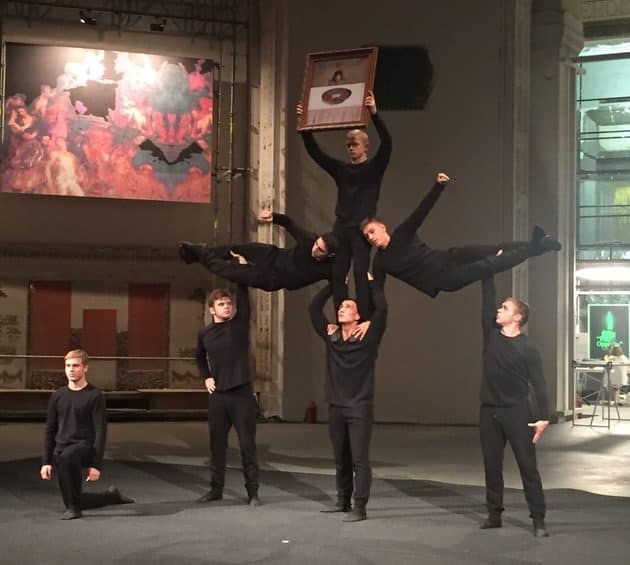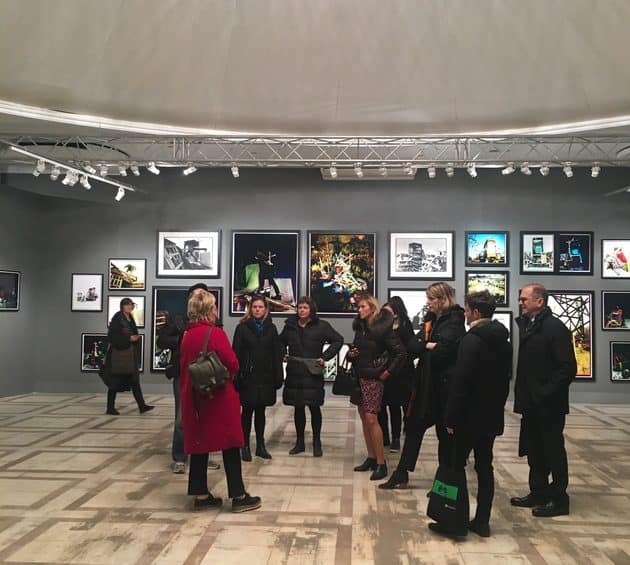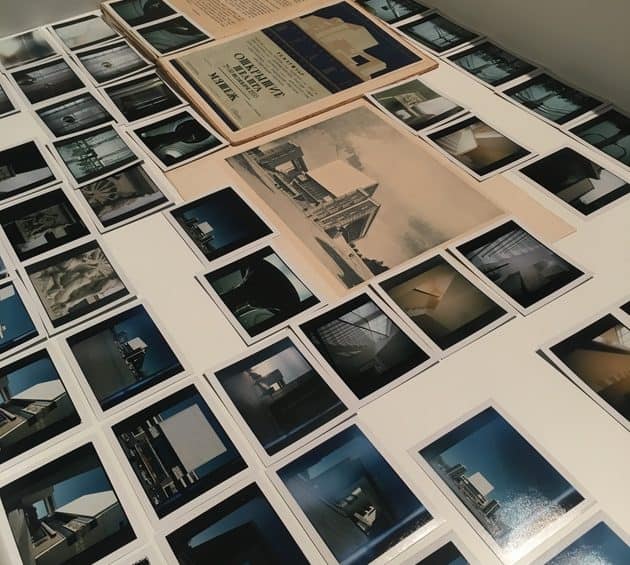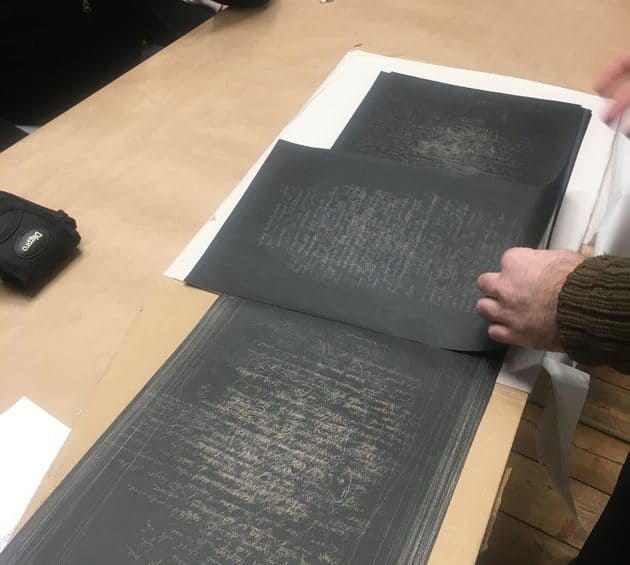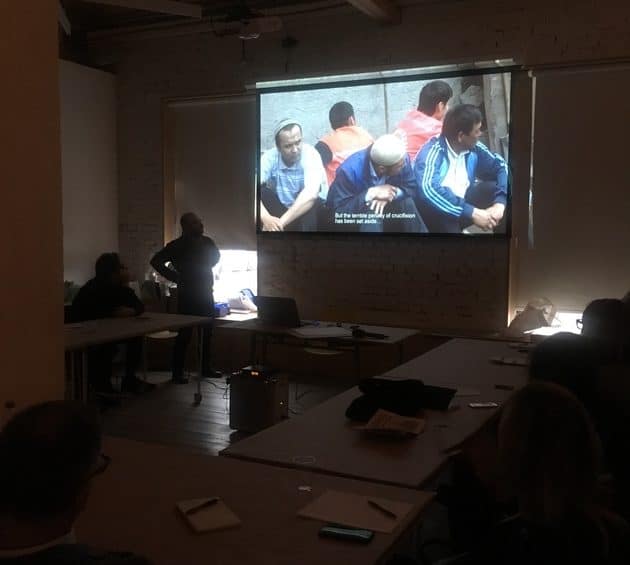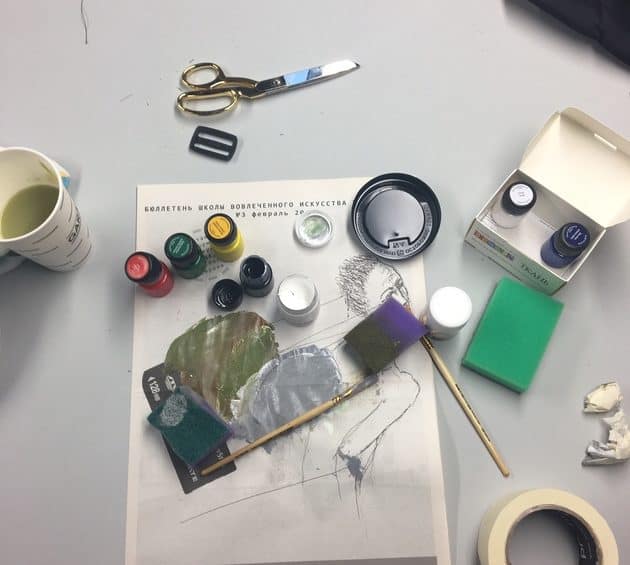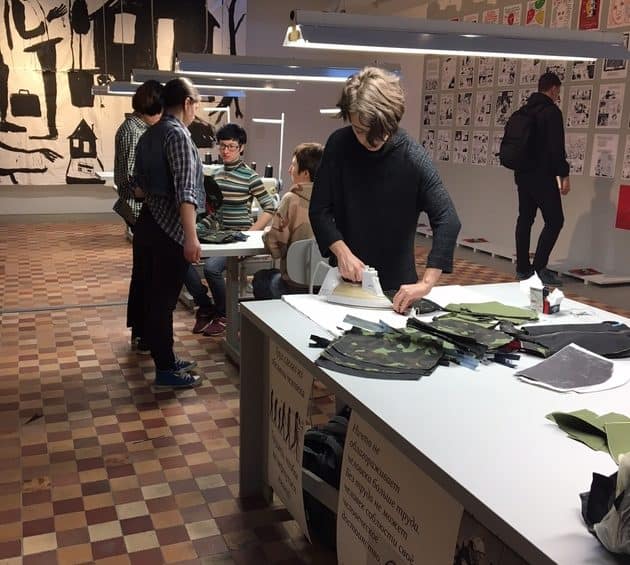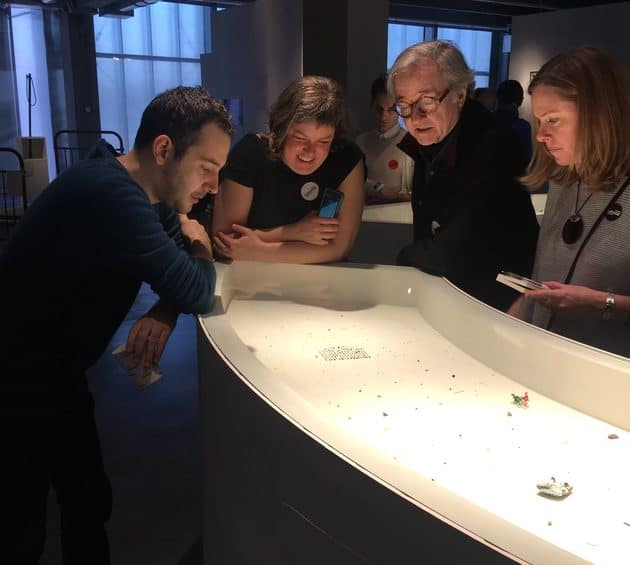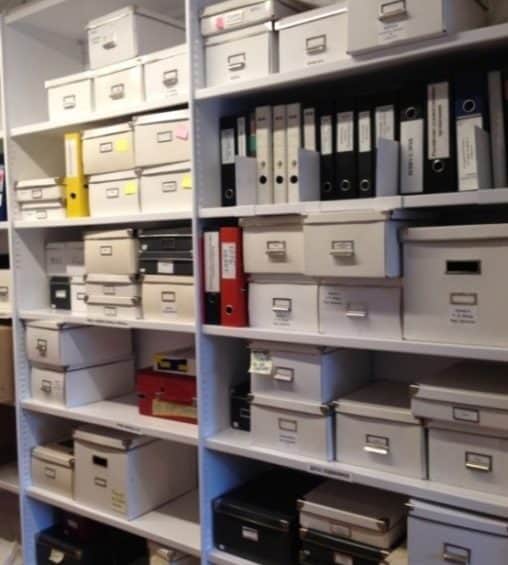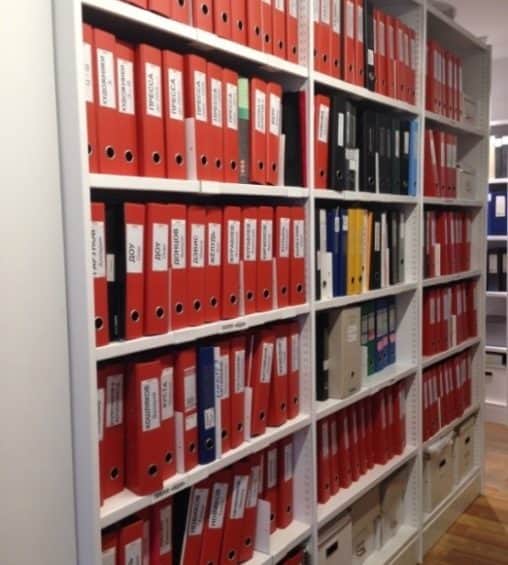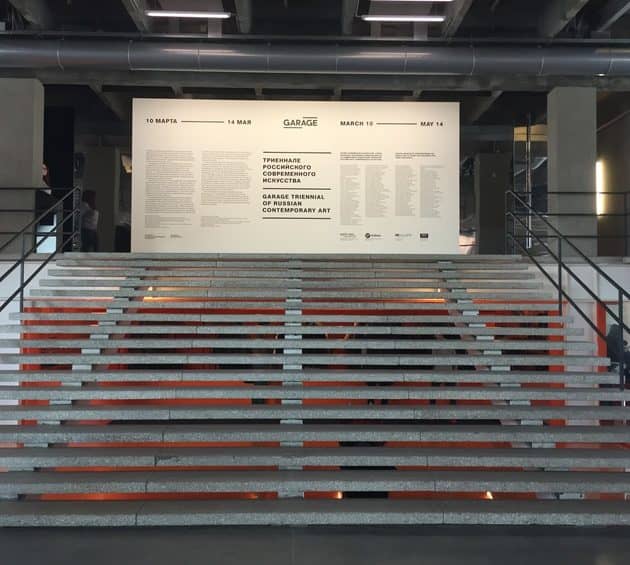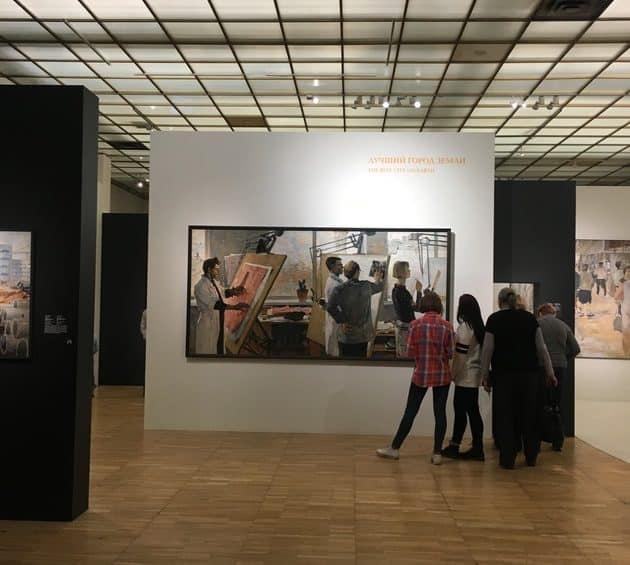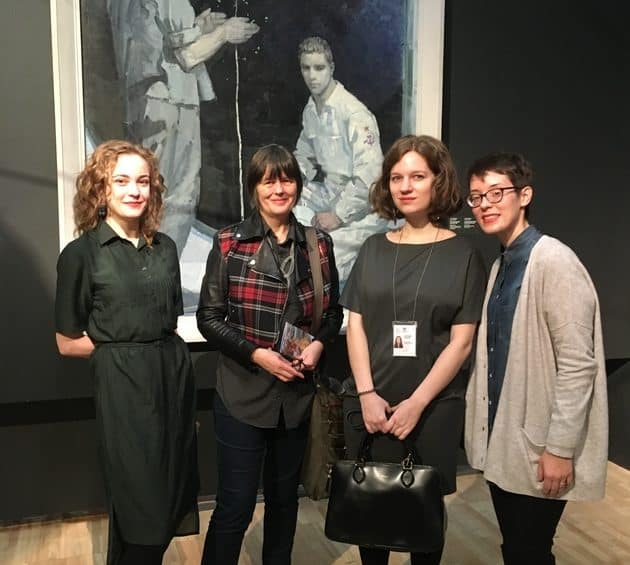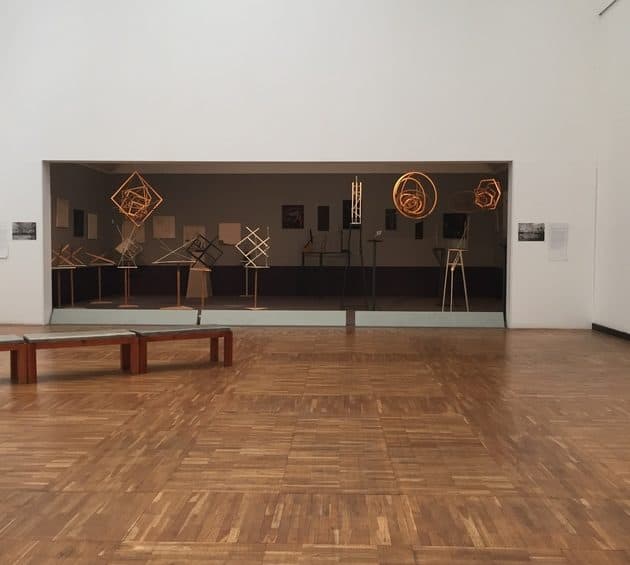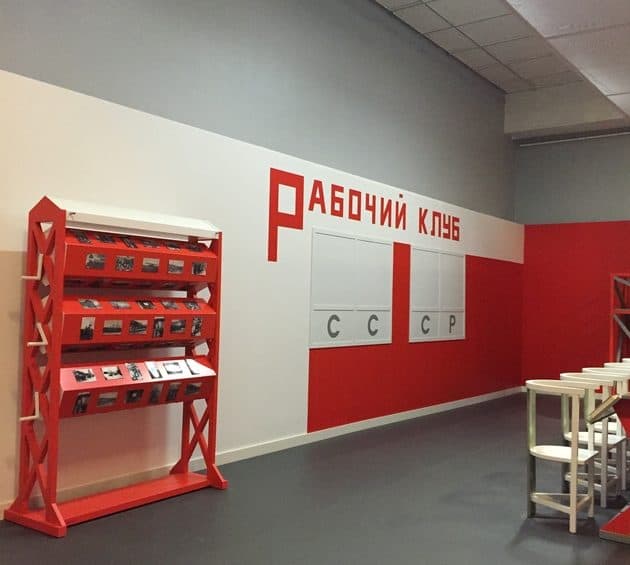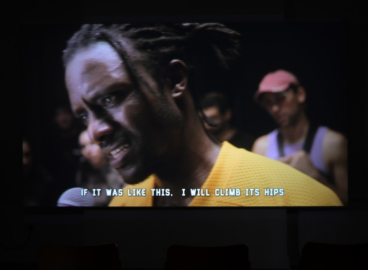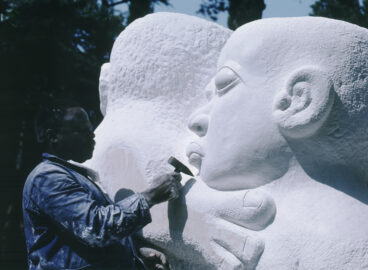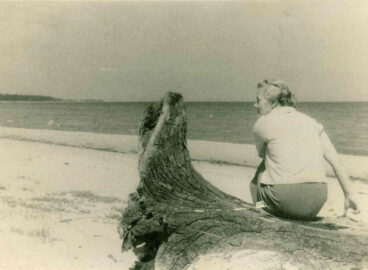Over a dozen members of the C-MAP Central and Eastern European group traveled for research to Moscow in March 2017. As Roxana Marcoci, Senior Curator of Photography, notes, Russia spans eleven time zones and includes two-hundred nationalities. From this vast and deeply complex nation, the participants report on their impressions below.
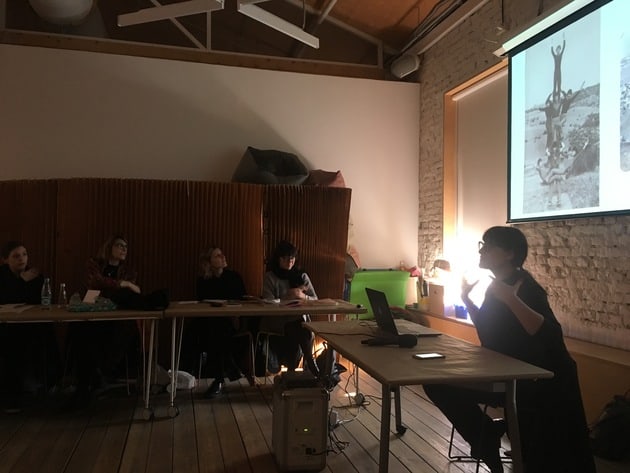

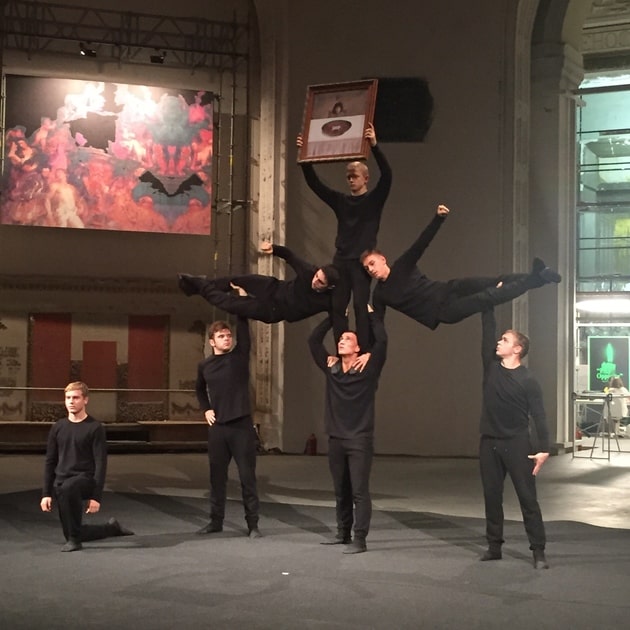
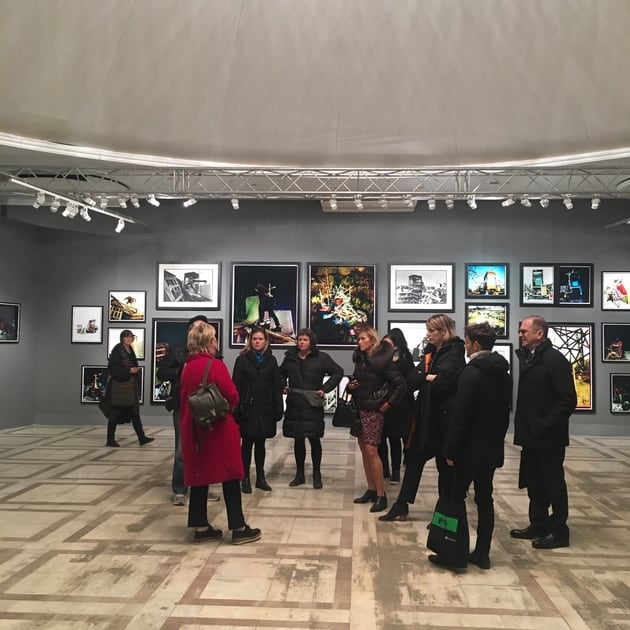
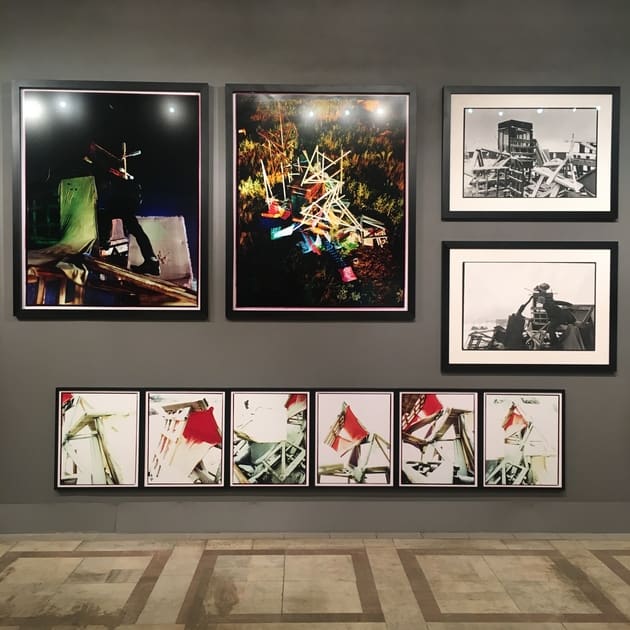

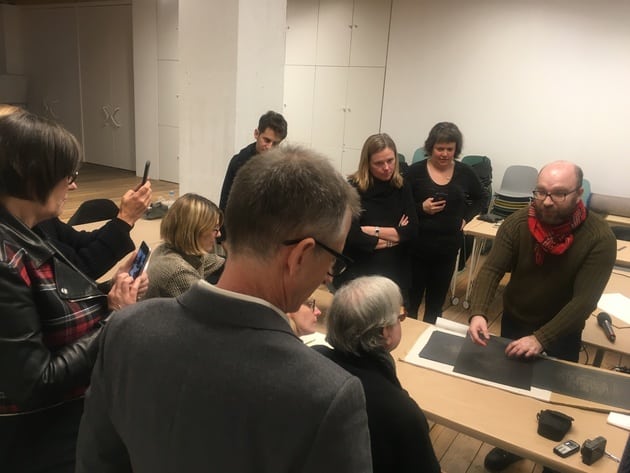

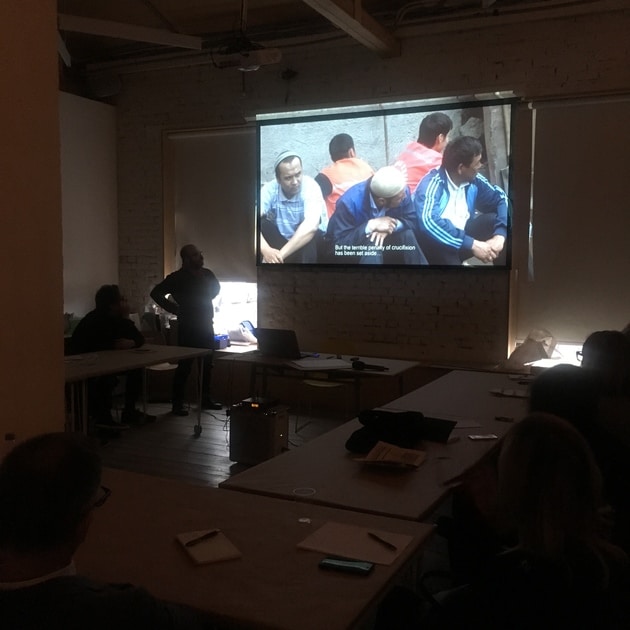
Reflection by Ksenia Nouril, C-MAP Central and Eastern Europe Fellow
After weeks spent busy organizing the second C-MAP Central and Eastern European Group trip to Moscow, I found myself on the nine-hour flight from New York, wondering what to do with a brief moment of respite. Running through my mind were the intricacies of our densely packed schedule of meetings with artists and curators, tours of historic cultural sites, visits to museums, and the grand opening of the first Triennial of Russian Contemporary Art at the Garage Museum of Contemporary Art. There is always so much to do and so little time in a metropolis like Moscow, a city I have come to love dearly through my many visits as an independent scholar and then C-MAP fellow for Central and Eastern European art at MoMA.
I was reminded of Moscow’s entrancing effect when I decided to spend my inflight time re-watching the classic Soviet film Moscow Does Not Believe in Tears (1981), which tells the story of three young women who have moved to Moscow from the provinces in the 1950s to learn about life and love, often the hard way. The film’s opening credits roll on the backdrop of a bird’s-eye view of Moscow. In the city’s skyline, one can spot the many bridges that cross the Moscow River, a few of the tiered-cake-like buildings known as the Seven Sisters, its wide boulevards, and the vast network of housing blocks that encircle the city center with micro-neighborhoods for the proletariat. Moscow has the reputation for being synonymous with Russia. It is the largest city in the largest country in the world, making it the de facto center of Russian politics, economics, and culture. Moscow monopolizes the country’s and the world’s imagination; however, there is so much more beyond it, spanning a Russian Eurasian landmass from the Gulf of Finland in the west to the Bering Sea in the east.
Yet, Moscow continues to be a major crossroads for people, places, and things traversing the globe. The Garage Museum of Contemporary Art actualized this by bringing more than sixty artists from about forty cities to Moscow for the first Triennial of Russian Contemporary Art. This was no easy feat—the result of many months of travel to places with varying languages and customs, in several different time zones. My further comments will focus on just a few artists—both included and excluded in Garage’s Triennial—who caught my attention because of the ways their works navigate complicated geographies.
Based between Dagestan, a republic in the North Caucasus region, and Moscow, Taus Makhacheva mines the histories of her family and her country in multimedia works that engage the viewer through impassioned narrative and performance. Makhacheva screened several films for the C-MAP Central and Eastern European Group, including Tightrope (2015), which most recently was exhibited in the main pavilion of the 57th Venice Biennale. Delving deep into personal archives, the artist researched the lives of tightrope walkers and aligned their previously invisible history with that of the precarity of the art collections in the underfunded and underappreciated regional museums across the former Soviet Union. In the film, a tightrope walker individually carries one of several dozen works from the Dagestan Museum of Fine Arts, named after P. S. Gamzatova, across a sizeable gap between two cliffs. While the elevation goes unstated, it is clear that he is performing a feat of epic proportions. Seemingly futile, the tightrope walker’s action metaphorically points to the urgent need for “keepers” of cultural histories, as Makhacheva herself dedicates much of her work to questioning the parameters of such histories and the role of the artist in their preservation. The film is often accompanied by a performance entitled On the Benefits of Pyramids in Cultural Education, Strengthening of National Consciousness, and the Formation of Moral and Ethical Guideposts, in which acrobats, hired locally at the site of the given exhibition, restage this symbolic movement of paintings in a gymnastics routine.
Sergey Sapozhnikov is a photographer based in Rostov-on-Don in southern Russia, not far from the Ukrainian and Georgian borders. When Sapozhnikov is not shuttling back and forth to Moscow, where he often exhibits, he is photographing his hometown and the cities beyond. His book The City, published in 2016, is composed of black-and-white photographs of freestanding houses, apartment complexes, garages, commercial buildings, and other similar structures in various states of disrepair in Rostov-on-Don; Samara, in the Volga region; and Vladivostok, in the far east of Russia. On the one hand, the photographs document the everyday in Russia today. On the other hand, they also capture an absence, as the figure—human or animal—is conspicuously missing. Unfortunately, the C-MAP Central and Eastern European Group was unable to meet with Sapozhnikov on this trip—having met him on our first trip to Russia in 2015—since he was home in Rostov-on-Don, working on his next project. However, we visited his exhibition The Drama Machine at the gallery at the Udarnik Cinema with Teresa Mavica, director of the V-A-C Foundation, which has supported Sapozhnikov’s work in the past. Through both color and black-and-white photographs, the photographs in The Drama Machine capture the Maxim Gorky Drama Theater, designed by the architects Vladimir Shchuko and Vladimir Gelfreikh in the early 1930s in the Sapozhnikovs’ native Rostov-on-Don. The Constructivist-inspired building itself figures in only a few of the photographs, along with some archival materials, but it serves as inspiration for the artist’s own constructions, namely, images of what appear to be found or partially staged heaps of garbage—wooden pallets, metal crates, bolts of fabric—on and around which actors and dancers—his acquaintances—play in a phantasmagoric mise-en-scène.
Upon hearing his life story, one can say that Haim Sokol is a professional migrant. Born in the northern city of Arkhangelsk to a displaced Ukrainian-Jewish family, Sokol lived in Israel for sixteen years after the fall of the Soviet Union before relocating, in 2001, to Moscow, where he still lives and works. Thus, it is not surprising that Sokol’s work is preoccupied with the topics of dislocation and self-identity. For his film I am Spartacus (2012), the artist hired economic migrants to reenact the iconic scene from Stanley Kubrick’s 1960 Hollywood classic Spartacus. As in the original, these men, who come to Moscow from Central Asia for better yet still low-paying manual-labor jobs, join forces in claiming to be Spartacus, the slave who led the uprising against the Roman Republic around 111 BC. They are stronger together than on their own. The two-minute-and-seven-second film is short but powerful, as the viewer is swept away in solidarity. In keeping with his nomadic lifestyle, Sokol was between studios earlier this year, and so we met him in the Garage Education Center, where he screened his films and shared his installations and works on paper with us. We previously met Sokol on our 2015 trip to Moscow, when we saw his work Well (2013) in a group exhibition at the Moscow Museum of Modern Art. It comprises hundreds of photographic portraits that Sokol had collected over the years, which are laid inside a large, open-top structure that invites the viewer to peek inside and contemplate the histories and fates of these anonymous subjects.
Reflection by Sara Bodison
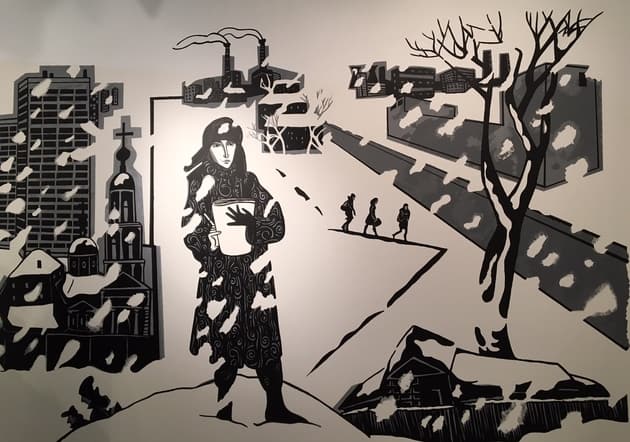
A few days before our trip to Moscow, the C-MAP Central and Eastern Europe Group had a chance to meet with artist and human rights activist Victoria Lomasko. She was in New York promoting her new book Other Russias and drawing a site-specific mural for an exhibition of her work Unwanted Women at Ortega y Gassett Projects in Brooklyn.
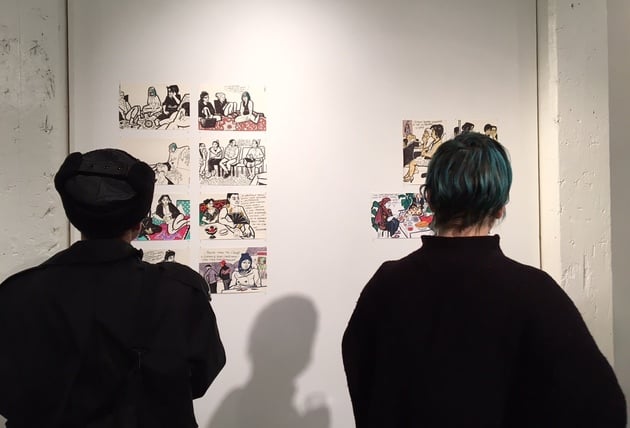
Other Russias is the first collection of Lomasko’s graphic reportage, a body of work that she produced between 2008 and 2016. It features drawings she made directly from life, capturing everything from protests and political trials in Moscow to people she met during her travels across Russia—everyone from school teachers in small villages to sex workers in dying industrial towns to juveniles in a drawing class she taught at a detention center. She said she allows her subjects to review and approve their own words, which she uses as captions. Lomasko explains that by documenting her subjects through drawing, rather than through photography or video, she aims “to break through to a more direct grasp and reflection of the reality around me.” Beginning in 2012 Lomasko curated The Feminist Pencil, a series of exhibitions (and related publications) showcasing socially engaged graphic art by women—from manga to graffiti. When we were in Moscow we met with her co-curator for the exhibition, Nadia Plungian, a historian, artist, and activist whose current research focuses on LGBT history in Russia and queerness and masculinity of female figures in Soviet socialist realism.
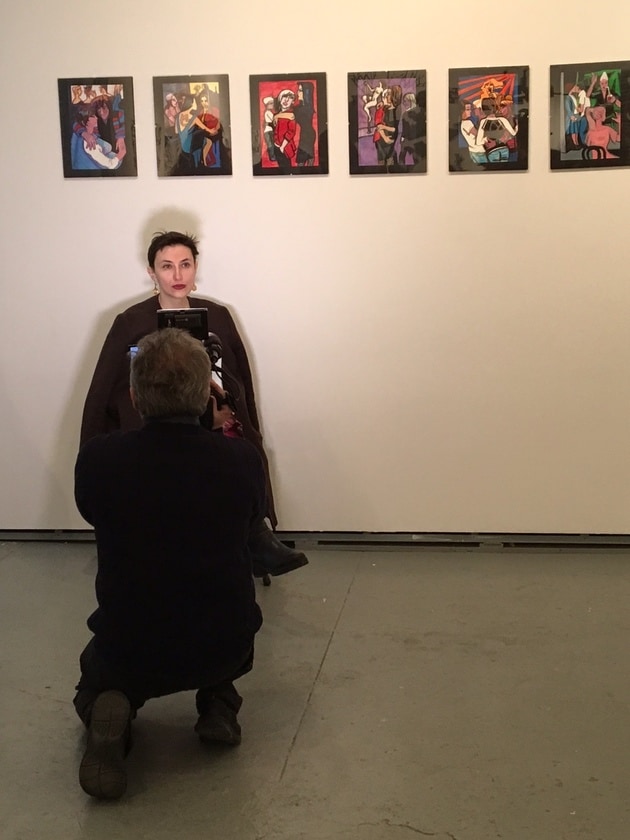
We also saw sixteen of Lomasko’s drawings of protestors demonstrating for and against Pussy Riot (among other issues) featured in the inaugural Garage Triennial of Russian Contemporary Art in Moscow. They were on view in a gallery devoted to one of the exhibition’s thematic vectors—“Art in Action”—featuring eleven artists and collectives who “intend to be catalysts for social change.” At the center of this gallery were four sewing-machine stations, where Shvemy sewing cooperative performed 12-Hour Workday, re-creating and critiquing a real workday at a sweatshop, on opening weekend. Over the course of the long day, they worked rapidly in an assembly line to produce fanny packs, taking just three bathroom breaks and a fifteen-minute lunch break, and speaking only of work. The next day they sold the packs, which they had emblazoned with the phrase “Made in Slavery,” for forty-four rubles each—the average sum a Russian worker is paid per garment. The collective takes the sweatshop as the subject of its work because they believe it is “the main place where poverty is propagated today, as well as being a place of subjection to the powers that have created and maintained such labor conditions.”
An adjacent vector titled “Personal Mythologies” featured the work of Gentle Women group, who examine gender issues through the “complex of myths, ideas and common beliefs about what women are. . . .” The video Bread and Salt shows a woman salting the sea, remnants from another performance, archival images, and a visitor’s review, which states: “This is exactly what a woman should do, something that looks beautiful, but is in fact pretty useless. Spending time and energy on salting the sea but forgetting to salt her own soup.” Other works explored aspects of the body and childbirth including a video of a woman squeezing breast milk at the camera.
The last day of our visit we met with Taus Makhacheva, whose work (including The Way of An Object, which was featured in the Triennial) draws inspiration from her native Dagestan. I was particularly delighted to hear her speak about the work of her “colleague and alter ego Super Taus,” who wears traditional clothing and lives in the mountains with her family. In one performance Super Taus carried a giant sculpture on her back through the galleries of Centre Pompidou, stunning passersby. In another, seemingly impossible act, she walked from Dagestan to Moscow carrying a monument. And in yet another she spent nine minutes pushing a giant boulder to clear the road, all captured in a dashcam video circulated on WhatsApp in hopes that it would go viral—heroic indeed!
These diverse works by women artists and collectives—whether drawn, sewn, thrown, or pushed—help to give voice to voiceless citizens, make visible invisible labor practices, and heroicize unsung heroes. The varied perspectives, strategies, and forms of their works offer new insights (and in some cases, much-welcome levity) about many of the most pressing social and political issues facing Russia today.
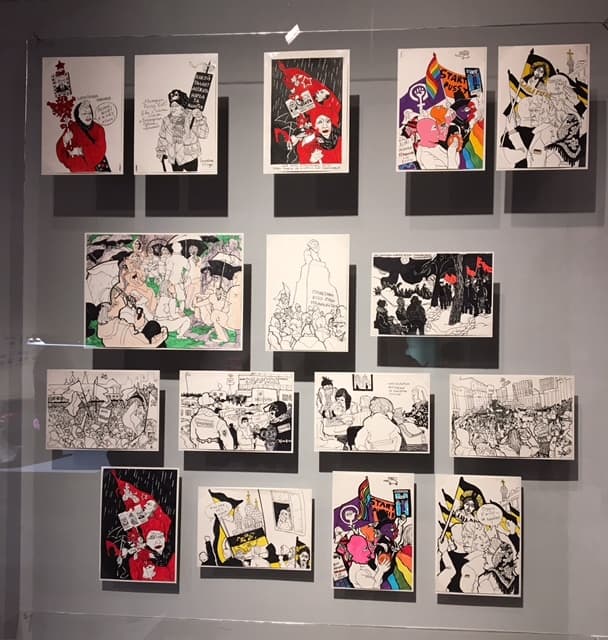
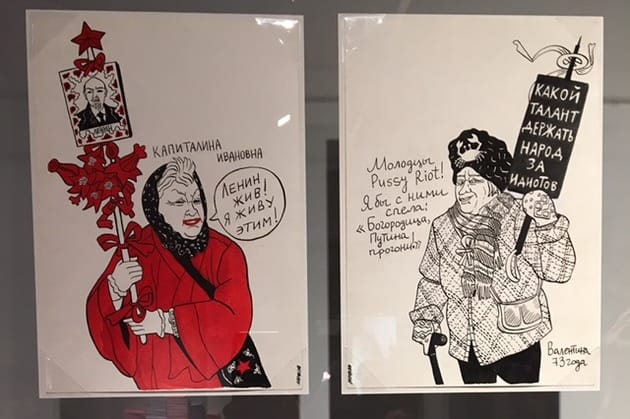
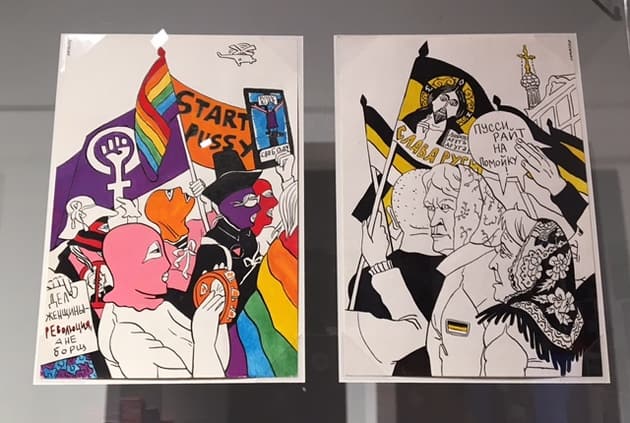
Reflection by Roxana Marcoci
In March 2017, the C-MAP Central and Eastern European group traveled to Moscow to attend the opening of the first Triennial of Russian Contemporary Art organized by the art museum Garage with works from across Russia’s eleven time zones. The exhibition included 68 artists and collectives and was organized by a six-person curatorial team around seven vectors: “Master Figure,” “Art in Action,” “Fidelity to Place,” “Personal Mythologies,” “Common Language,” “Local Histories of Art,” and “Mythologies.” The exhibition maps Russia today as a place grounded in multiple heritages (Russia comprises two hundred nationalities)—from Siberia to Chechnya—construing a prismatic montage of the different cultures from within its borders. One of the thorny issues surrounding the Triennial was the inclusion of Crimea —the Ukrainian territory that was annexed by Russia in 2014. The curatorial decision was to address the artistic life in the region but also to critically tackle its political underpinnings through a series of actions: a performance by Simferopol-based Free Dance Lab group; a discussion about Crimean artists working in Crimea, Ukraine, and Russia; and a presentation of Chto Delat’s Safe Haven (2016), a film about Crimean filmmaker Oleg Sentsov, who is currently imprisoned in Russia for protesting the annexation.

Photo: Ksenia Nouril
2017 marks the centennial anniversary of the Russian Revolution, and although exhibitions celebrating the event abound across museums from New York to Chicago, London, Paris, and Venice, no institution in Moscow seems to mention this political milestone, which buttressed the rise of Russia’s first artistic avant-garde—as if the word “revolution” in itself could stir unwanted political discontent. The Garage Triennial may be the exception. A cross-generational exhibition, it includes works that have been made since 2012, the year of the last Russian presidential elections, which brought Vladimir Putin once again to the helm of the Russian Federation. In particular, the section “Art in Action” features urgent, politically charged work by fringe feminist collectives and activists such as Shvemy sewing cooperative, Victoria Lomasko, Urbanfeminism, and Nadenka creative association, who address issues including domestic violence (recently decriminalized in Russia) and the repression of LGBTQ rights (public displays of homosexuality are illegal), as well as sweatshop labor.
The section “Fidelity to Place,” which focused on associating sociopolitical themes with the landscape and broader environment, was particularly well curated. It included various works from Taus Makhacheva’s marionettes, with their emphasis on the traditional, the ethnic, and the modern; to Aslan Gaisumov’s display of recovered house numbers from his partially destroyed hometown of Grozny; to Vladimir Seleznyov’s Metropolis. Nizhny Tagil, an immersive installation filled with empty milk cartons, sardine cans, shoeboxes, and other discarded items that the artist had gathered from his Ural hometown.
Additionally, Garage’s Rem Koolhaas–designed facade was topped with an Ugo Rondinone rainbow sign. As part of the museum’s inclusivity program, children from across the country were invited to collaborate, contributing some 1500 pictures of their own rainbows, which were hung on a wall in front of the museum’s entrance.
With the idea of furthering international exchange, Garage Museum awarded travel grants to ten international curators—Riksa Afiaty (Indonesia), Çelenk Bafra (Turkey), Lizaveta German (Ukraine), Jarrett Gregory (United States), Albert Heta (Kosovo), Li Qi (China), Joanna Sokołowska (Poland), Polly Staple (Great Britain), Chen Tamir (Israel), and Diana Ukhina (Kyrgyzstan)—who were able to visit and reflect on the exhibition.





Reflection by Ana Janevski
After two rich days in Moscow visiting many museums, seeing historical and contemporary shows, and engaging in stimulating conversations with artists, curators, and peers, we attended the opening of the first edition of the Garage Triennial of Russian Contemporary Art on Wednesday evening, May 9. The opening was very festive, gathering most of the artists presenting works, Moscow’s principal art figures, and several of the ten international curators who had been awarded travel grants, offered by Garage, to visit the exhibition.
What we learned about the Triennial before attending was that it included sixty artists from across the country selected by six members of the Garage curatorial team. The Triennial was commissioned and conceived by Kate Fowle, chief curator of Garage. Overseen by Fowle, Katya Inozemtseva, Snejana Krasteva, Andrey Misiano, Ilmira Bolotyan, Sasha Obukhova, and Tanya Volkova traveled throughout the country, visiting “forty cities and towns, crossing eleven times zones, in climates that range from the subtropical to the subarctic.” Later I learned that there are nearly two hundred nationalities and one hundred distinct languages spoken in Russia.
The two floors of the overall space were broken down by individual curators into seven “vectors,” or thematic groupings, including “Master Figure,” “Personal Mythologies,” “Street Morphology,” “Common Language,” “Fidelity to Place,” “Art in Action,” and “Local Histories of Art.”
Although an opening is not usually an ideal moment to thoroughly view an exhibition, I had a chance to join Snejana Krasteva’s tour, which she gave together with Maria Lind, director of Tensta konsthall in Stockholm, and Zdenka Badovinac, director of the Museum of Modern Art in Ljubljana, Slovenia. I joined them on the first floor, in “Master Figure,” where Krasteva was talking about Andrei Monastirsky, one of the founders of Moscow Conceptualism. Monastirsky was presenting four new videos in a series entitled Four Walks (2017). All walks started in the same place, which was significant to the history of Moscow Conceptualism, but each one ended at a different Moscow landmark. The other artists represented in this vector were Pavel Aksenov, Dmitry Bulatov, Ilgizar Khasanov, Anatoly Osmolovsky, and Dmitri Prigov. Each one of these artists, in his own specific way, has had an impact on the younger generation of artists across the huge territory of Russia. We asked Krasteva why there were not any women artists represented in “Master Figure.” She said the curators were aware of the strong presence of male artists in this section, but that there were no equally influential women artists of this same generation. While this explanation left me and my tour companions a bit perplexed, the next vector, entitled “Art in Action,” presented a very different situation, with a dominating number of female artists, whose work seemed to reference other “master” figures.
The path of the overall exhibition was pretty fluid, with open space, but some of the vectors were more delineated—as was the case with “Art in Action,” which occupied an entire gallery. The evening before, together with my colleague Laura Hoptman, a curator from the Department of Painting, and Viktor Misiano, a well-known Russian curator, we had talked about the important and controversial performances in the nineties by Alexander Brener, Oleg Kulik, and Avdei Ter-Oganian. We ended our conversation by discussing the generation of artists who have followed in their footsteps. “Art in Action” seemed to start exactly where our discussion had ended, by bringing together collectives and artists whose works focus mainly on critiques of social and political issues, and intend art as a catalyst of social change. They often consider themselves more activists than artists, practicing social work, journalism, or political activism, as is the case with Artem Loskutov, the organizer of the annual happening “Monstration,” or Katrin Nenasheva, whose public actions bring attention to the system of “corrective” psychiatry. The artistic collectives from the beginning of this decade, such as Voina, Pussy Riot, and Chto Delat, had a very strong influence on these younger artists, some of whom attended Chto Delat’s School for Engaged Art in St. Petersburg. Special attention was given to feminist issues, including domestic violence and emancipation from patriarchal society and institutions, through the works of collectives such as Shvemy sewing cooperative, a clothing manufacturing cooperative and collective who performed 12-Hour Workday, in which they re-created a factory workday at the opening; Nadenka creative association, who presented embroidered everyday objects and clothing with slogans that address the position of women in Russian society; and Urbanfeminism, who organized, among many other initiatives, self-defense classes for women and also published zines that were distributed in exchange for donations to a center for victims of sexual assault and shown in the gallery.
A few of the other artists represented in this gallery also had very personal and specific ways of dealing with the country’s salient political issues: Victoria Lomasko’s drawings refer to the prerevolutionary tradition of visual reportage. In Chronicles of Resistance (2011–12), she documents the Moscow demonstration from 2012 with direct quotes from participants. Alexey Iorsh’s project Art Activism in Comics (2012–ongoing) champions comics as a tool of activism. Anastasia Potemkina’s Bruise (2014) turn traces of physical violence into aesthetic images using the traditional medium of watercolor, while Alisa Yoffe’s large-format works in black and white present images with revolutionary potential.
The day after the opening, when we returned to the Triennial, we had a tour with another of its curators Andrei Misiano. It was interesting to follow the path of a different curator and to get his perspective on the overall exhibition. I went back to “Art in Action” to confirm that the challenging task of presenting this kind of work, mainly through its documentation, has been well resolved. The display presented a variety of media and was testament to a very vital and engaged artistic scene, one that is responsive in many different ways to current local and international social and political issues.





Reflection by David Platzker
Myths and religion are the building blocks of art and art history. Artists, artisans, commissioners, collectors, historians, and curators have long reveled in portraying, possessing, and presenting stories of biblical, political, historic, personal, and otherwise divine sagas.
In this very traditional sense, the purest roles of art are that of storytelling, chronicling, interpreting, and messaging narrated moments—as slices of a feed if you will—to audiences as facts, morals, or parables. In eras long before photography was the primary tool of disseminating truths to a public audience, where literacy of images was often greater than that of written language, pictures—chiefly paintings—conveyed the majesty of ideals, since seeing encouraged believing.
In the early years of the twenty-first century, in the post-photography, post-video, post-internet, post-fact world, the art of telling stories has evolved to suit our times. Belief has become restructured by a cynicism that what we see in any medium—whether static imagery, video, aural, or textual—and is strained by an erosion of confidence that what is being conveyed is an objective-based reality. The power of a story solidified as a still image in any medium is tempered too by the locus of the delivery system by which one experiences a captured moment. Here, context drives experience, with perceptions shifting based on where and how an image is presented as much as on what the image is of. The question herein is whether the presentation in the context of a museum or a reputable newspaper connotes a definitional environment—an authentic place of faithful engagement, one that is greater in value—as a substrate for understanding that is the same, or as effective, as if it were presented on the screen of a cell phone without broader contextual surroundings.
Contemporarily tinkering with authenticity and with the crafting of new personal mythologies is the medium for artists Taus Makhacheva (b. 1983) and Evgeny Antufiev (b. 1986), who were featured in the Garage Triennial of Russian Contemporary Art and also made individual presentations to our C-MAP group on March 10, 2017. Rephrasing history and fashioning unique fictional narratives are the subjective materials of both artists, who take divergent, often intentionally humorous approaches to constructing chronicles that teeter between personal and colloquially regional experiences. Makhacheva, who is based in both her native city of Makhachkala, Dagestan, and Moscow, spoke to us about her work and alter ego—a character named Super Taus, who is a nondescript, ethnically clothed woman with the superpower of great physical strength tempered by utmost modesty. Deployed by Makhacheva, Super Taus appears in video works the artist has shared with the public though social media, confusing the underlying interpretation of the works as factual documentation of real feats of strength, as humor, and/or as a product of an artistic process. Equally challenging is whether such differentiations are even necessarily good or an indispensable prerequisite to an appreciation of the endeavor. It can be viewed here.
Falling short of starting his own religion, Antufiev discussed how his sculptures and installations reflect a desire on his part to craft objects that can be read as depicting alleged deities and the their accoutrements in a way that feels ancient formally and materially—conceivably as freshly unearthed artifacts rather than as contemporary works of art. As Antufiev spoke of his activities, it was clear that he has an inherent, contagious sense of humor, which left some of us wishing for more.
In Makhacheva’s and Antufiev’s presentations, we heard from artists who recognize that deploying regionalism and unique cultural identities, and parlaying the ethos or mystique of a nondominant culture within the space—such as a museum in Moscow or a cell-phone screen—enhance a deliberate ideal of separation from cultural dominance toward a fuzzy sense of romanticism of “the other.” This appeal is, in fact, a subversive return to a genuine simplicity predicated on the removal of the layered necessity to understand artworks as composites of the history that backs their places in an expansive, logical march of progression, wherein one form of art owes its existence—or interpretation—to prior works, and how they have become contextualized in word and presentation by their interpreters, such as historians, critics, curators, and educators, to the public.
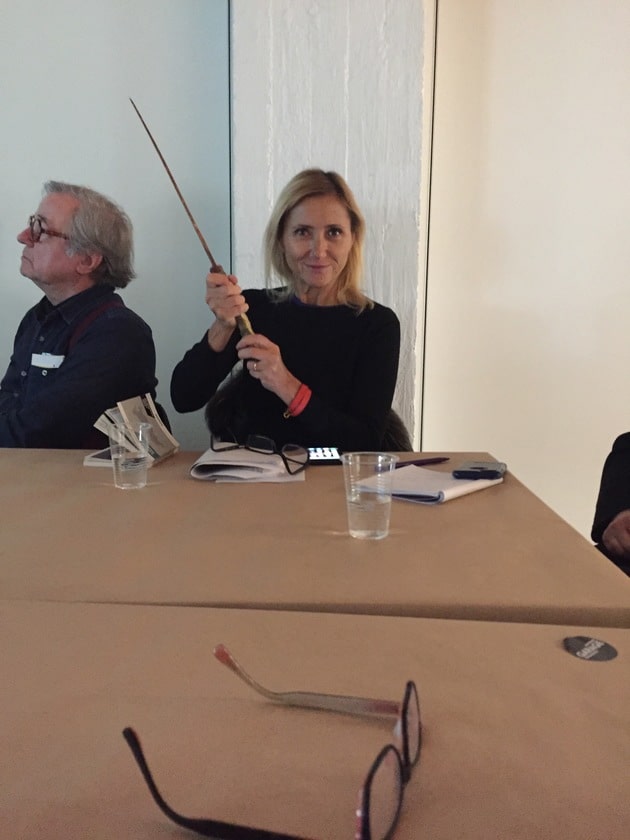

Photo: David Platzker
Reflection by Jon Hendricks
Beautiful Moscow! I was so happy to return and to be embraced by its extraordinary art and architecture, and especially by its people. We have made many friends on our two trips to the city, and it is really unfair to single out just a few to write about. In 2015, we saw Sasha Pirogova’s work in Berlin at the Künstlerhaus Bethanien in Kreuzberg, and I had the very special treat of sitting with her during a luncheon in the garden. She is an absolutely brilliant artist and thinker. This March she presented her work—a large-scale projection of choreographed waiting, anticipation, the not-yet-seen, the unknown—in the Garage Triennial of Russian Contemporary Art. Deceptively simple, and even seemingly trivial, this work is a profound metaphor for the future: What will it be? Who will be a part of it? Who will be excluded? It is about the inevitable . . .
Pirogova also gave our group a private presentation of her work the day following the opening of the Triennial, showing us several video works, and talking about her concepts and approaches to her practice. This year she will be one of the representatives of Russia in the Venice Biennale and so is in the process of preparing a new work, which we all are eager to see and experience. Pirogova is one of a small group of the new generation of artists around the world who has the ability to perceive the direction of our time and to open our eyes to it.
Another artist our group met in 2015 in Moscow, and whose work I have been very impressed with, is Alisa Yoffe. She was represented in the Triennial by a stunning wall of brutal drawings—stark and ominous in their direct confrontation with viewers. They have anger and, at the same time, anxiety, as well as convey Yoffe’s concerns about the world around her—temporal, fleeting, meaningless, seeking. We were very fortunate that she and three of her friends, Veronika Aktanova, David Ter-Oganyan, and Phillip Hulamhanov, could join a few of our group in the rooftop lounge of our hotel, following the opening of the Triennial, to talk and drink some delicious vodka. I think that this informal, spur-of-the-moment gathering was an important interaction with these young Russian artists—giving us unscripted insight into their work and thinking—something that I hope will happen more frequently in the future.
I also want to say how important I found our meeting with George Kiesewalter. He gave us a brief presentation of his work as part of Collective Actions group and also of his amazing photographic documentation of the Moscow avant-garde. I so hope that we can meet with him again in Moscow, and spend an afternoon talking and looking at his work. I think that this will be essential to our deeper understanding of this very vibrant and significant period in Russian art.
Of course, there is so much more to talk about. There was the fantastic exhibition at the New Tretyakov Gallery, The Thaw. At the Pushkin State Museum of Fine Arts, the very stimulating exhibition Facing the Future: Art in Europe 1945–1968, curated by Peter Weibel, places Russian art in the context of other European art of this time—and we were fortunate to have Weibel talk with some of us about the works as we looked at them. And yes, I did like the NAÏVE . . . NO exhibition at the Moscow Museum of Modern Art, and the Sergei Eisenstein exhibition at the Multimedia Art Museum.
Reflection by Erik Patton

Midway through the trip, after a visit to the Foundation of Vladimir Smirnov and Konstantine Sorokin, the group found its way to the soon-to-be V-A-C Foundation’s new Moscow site, GES-2, a former power station (built in 1907) that is being re-envisioned as a major site for contemporary art and culture. The Renzo Piano Building Workshop has been commissioned to revive and redesign the GES-2 main building and the surrounding area on the banks of the Moskva River. At the center of the newly imagined site is the institution’s commitment to performance (a large performance and theater-like space will take up a sizable footprint), which V-A-C has prioritized in recent years as made evident in its V-A-C Live programming with Whitechapel Gallery in London.

In fact, Moscow-based artist Evgeny Antufiev, with whom we met later on for a group-on-one studio visit (Antufiev’s work is also included in the Garage Triennial of Russian Contemporary Art), performed as a special guest at CABARET KULTURA with V-A-C Live (in September 2016 at Whitechapel), a series of experimental events inspired by Russian early twentieth-century avant-garde theater that took place in Russian artist Sergey Sapozhnikov’s site-specific stage set. For his performance, Antufiev created an absurdist and humorous lottery game featuring his objects-as-gifts in a playfully dark performance Dead Nation: Bingo Version.

Antufiev’s work in the Garage’s Triennial continued his interest in active mythmaking, the absurd, and his commitment to collecting and studying materials on Russian history and culture, including a monumental wooden sculpture in the tradition of the Scythians or the Etruscans. Other reliquaries on view referenced his personal history and family lineage (his grandmother’s teeth had found their way into his work).

At and around Garage MCA by Michelle Elligott

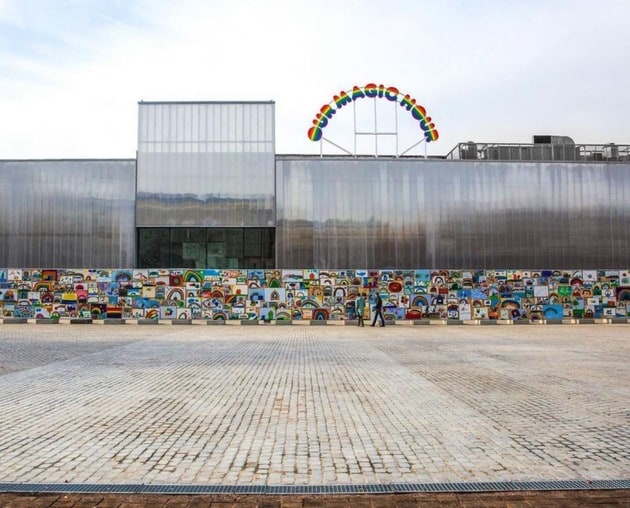
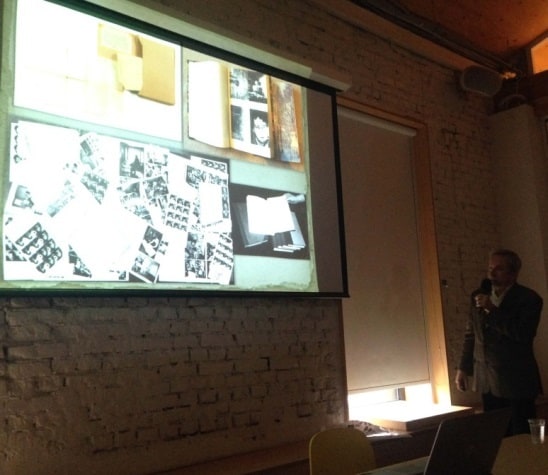
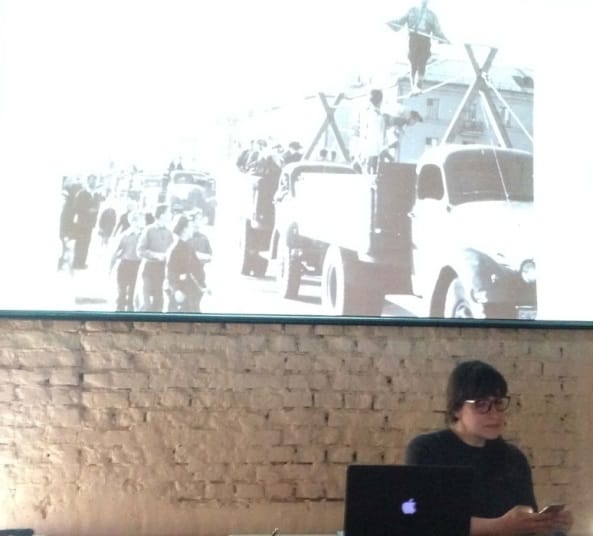

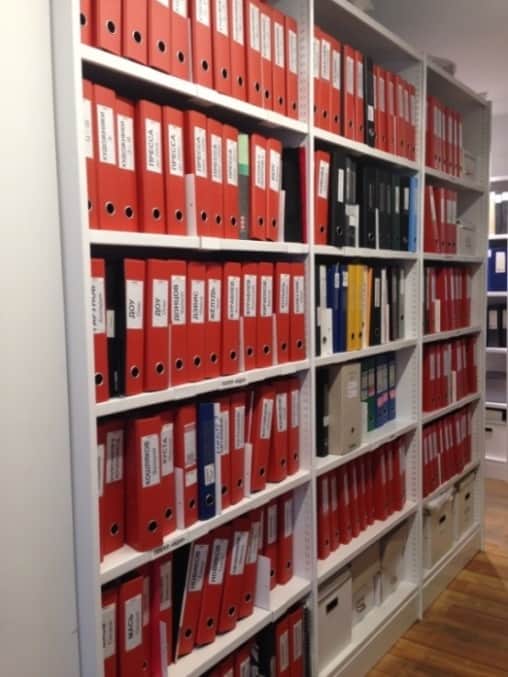
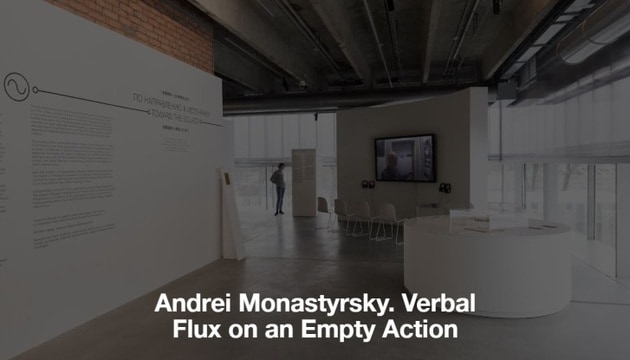
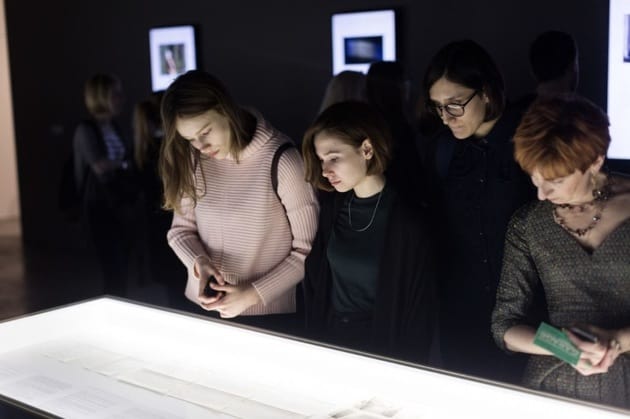
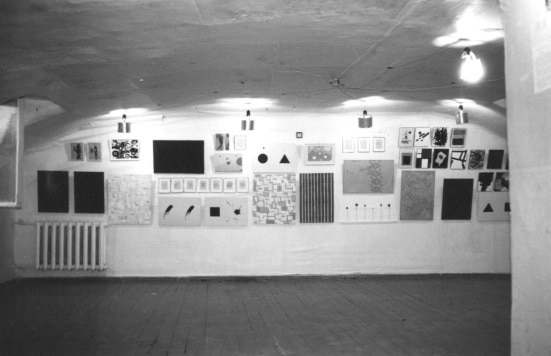
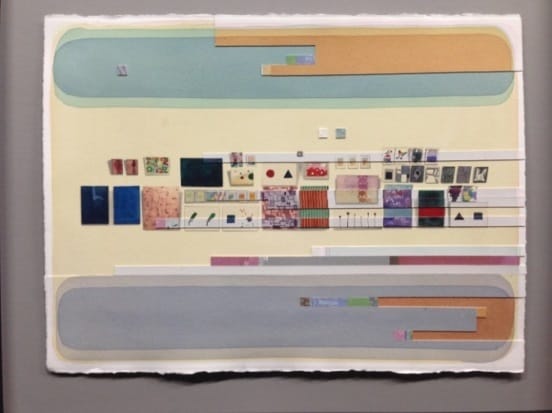
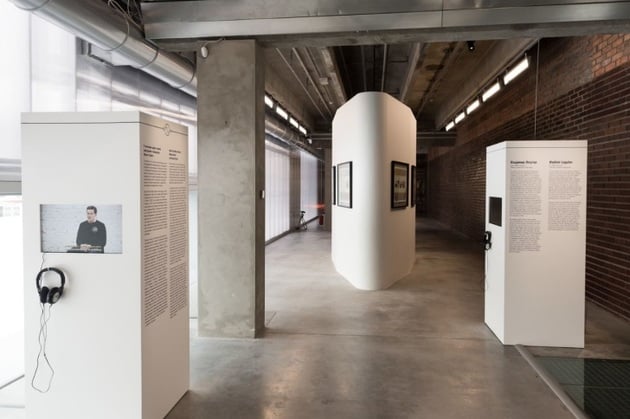
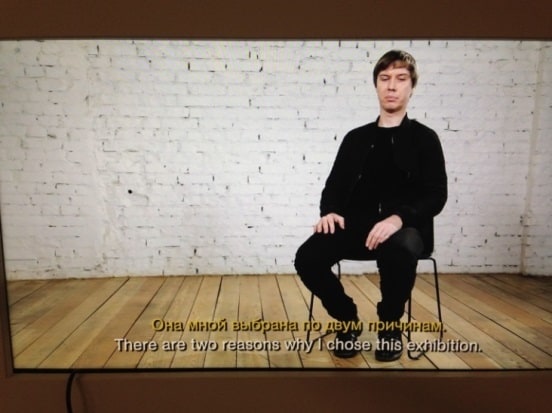
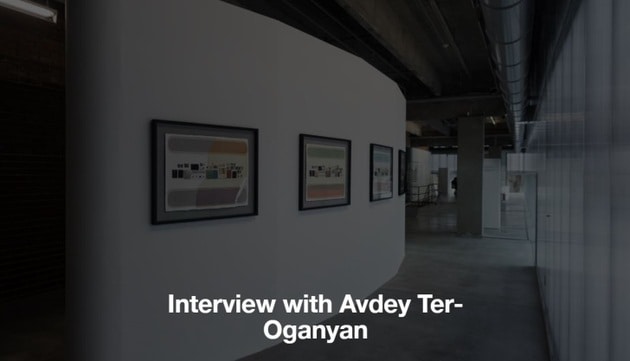
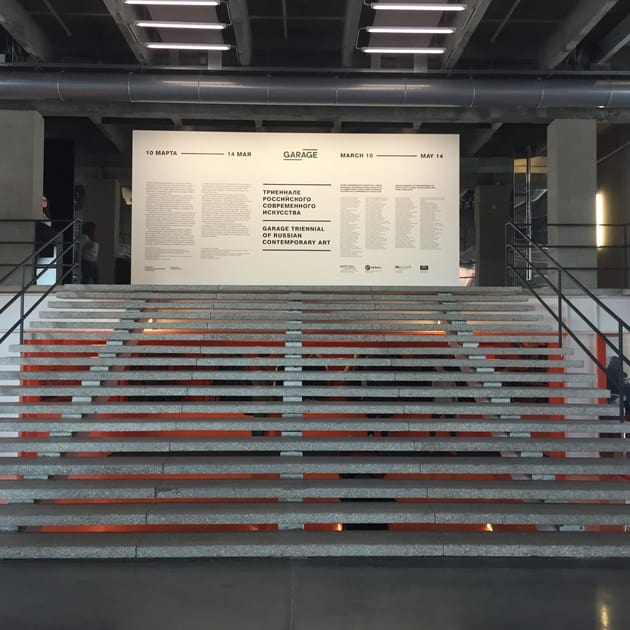
Reflection by Juliet Kinchin
Around the world there has been a rash of exhibitions and publications responding in some way to the centennial of the Russian Revolution, including MoMA’s own A Revolutionary Impulse: The Rise of the Russian Avant-Garde, which gave us all the chance to wallow in the riches of the Museum’s Russian avant-garde works from the years 1912 to 1935 while in the process of planning and discussing our Moscow trip. Yet evidence of a comparable Russian interest in this centenary was conspicuous by its absence from our Moscow itinerary. A couple of our Russian colleagues suggested that in the current political climate, the authorities have been reluctant to draw attention to a time of seismic revolution and a violent overthrow of the status quo. Instead there seemed to be a citywide focus on a less traumatic period of technological modernization and cultural cross-fertilization—the years of the “Thaw” after Stalin’s death in 1953 and before the “Stagnation” of the 1970s. The largest and most ambitious of these exhibitions was The Thaw at the New Tretyakov Gallery, which presented a nuanced view of the period’s achievements and conflicts, addressing the shadow cast by hidden histories of wartime suffering and Stalinist internment camps, as well as the triumphalist rhetoric of land reclamation, space exploration, and technological progress. The exhibition was organized like an urban plan, the thematic sections’ skillfully integrated displays—of paintings, sculpture, prints, photography, and film, with architectural models, samples of industrial design, household objects, and popular magazines—radiating out from an evocation of Mayakovsky Square. There was a wealth of mesmerizing design material: photographs of Kalinin Avenue under construction in the 1960s; an experimental electronic-music studio; abstract printed textiles; a 1967 “Saturn” vacuum cleaner; a scary-looking 1965 model of a mobile nuclear power plant; Hula Hoop, painted in 1968 by D. I. Blokhintsev, head of the Institute for Nuclear Research and world authority on quantum mechanics; and the intriguing discovery that a woman, Galina Balashova (b. 1931), designed the interiors of the Soyuz space capsule in 1964.
An exhibition on the design of everyday life, Moscow Thaw: 1953–1968 at the Museum of Moscow was less coherent in both concept and installation, an impression not helped by the minimal, Russian-only labeling. It was interesting, nevertheless, to see materials from little-known archives and collections being documented and brought together in a public display for the first time. At the Pushkin State Museum of Fine Arts, curators chose to lead off from Ossip Zadkine’s sculpture The Destroyed City in their wide-ranging survey of fine-art trends in Eastern and Western Europe after the war, entitled Facing the Future: Art in Europe 1945–68. Art from the Soviet Union was combined with that of seventeen other European countries in a series of telling juxtapositions, such as Hungarian Béla Kondor’s Phenomenon and Constant’s New Babylon (1967), challenging the conventional binary narrative of West = Abstract Expressionism versus East = Socialist Realism. Alongside familiar paintings were many I had never seen before, including Picasso’s Massacre in Korea (1951) and two Leipzig artists’ responses to the Hungarian Revolution: The Dead Dove (1956) by Harald Metzkes, and White Terror in Hungary (1957) by Werner Tübke.
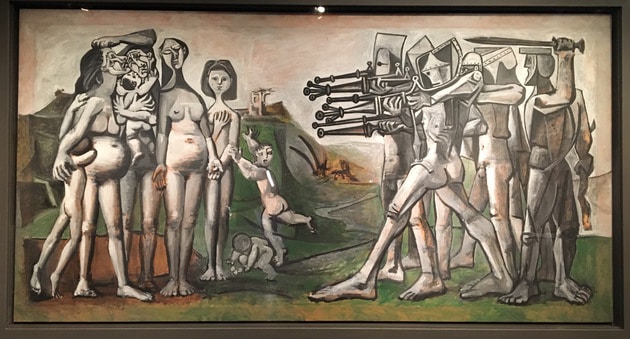
Photo: Juliet Kinchin
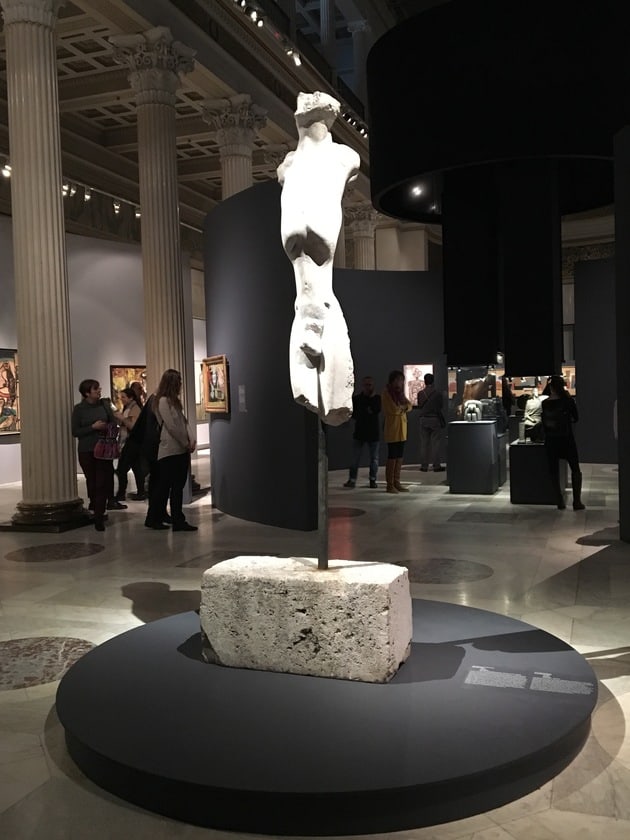
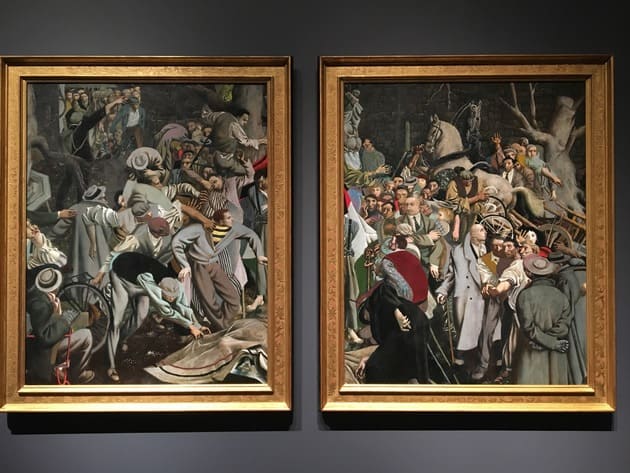
An exhibition of photographs from the 1980s by Igor Mukhin was the Multimedia Art Museum’s contribution to Fashion and Style in Photography 2017, part of the 10th Moscow International Biennale. Compared to Moscow’s Garage Triennial of Russian Contemporary Art, this biennale did not seem to have a high profile. It was interesting to see Mukhin’s photographs of crumbling Soviet sculptures, part of his Monuments series (1988), after visiting Muzeon, the park of similarly uprooted and toppled sculptures next to the New Tretyakov Gallery. Many of the images were reproduced as attention-grabbing floor-to-ceiling wallpapers rather than as vintage prints. Some of the music-based alternative culture Mukhin captured in the 1980s I had encountered last year in the excellent Notes from the Underground: Art and Alternative Music in Eastern Europe 1968–1994, curated by Daniel Muzyczuk and David Crowley at Muzeum Sztuki in Łódź. Also, at the Multimedia Art Museum, Moscow, there was an exhibition that took a deeper dive into the films, drawings, designs, and photographs of Sergei Eisenshtein. Eisenshtein’s film and visual ideas drawn from the time he spent in Mexico, and his 1931 drawing of Saint Veronica as the patron saint of photojournalism remain among my favorite memories of this trip.
Reflection by Maria Marchenkova
One of my favorite things about Moscow is its panoply of architectural styles—medieval churches, audacious Stalinist skyscrapers, and gaudy post-Soviet, postmodern developments, to name just a few—and the dramatic history they evoke. In Moscow the past seems especially strongly imprinted on the urban environment, because the country’s sharp breaks with its own history have repeatedly involved drastically, even violently, reshaping the landscape, with seemingly little regard for its value.
I was reminded of this during the C-MAP trip when I picked up an issue of the Moscow Times that contained an article about the city’s plans to demolish eight thousand local Khrushchevki, five-story apartment buildings named after Nikita Khrushchev, who initiated their construction on a vast scale in the 1950s in response to the country’s postwar housing shortage. Granted, these buildings have few defenders: they are not considered architectural gems and are generally in bad shape. But even structures that are esteemed by scholars and experts around the world, particularly those designed by the Soviet avant-garde, have generally not fared well. The Melnikov House (1927–29), designed by Konstantin Melnikov, might qualify as a rare success story, but even its long-awaited opening as a museum in 2014, after years of legal battles over ownership, was controversial, with architects and other experts protesting that proper renovation work hadn’t been done. Most historic avant-garde work has fared much worse. The iconic Shukhov Tower, by Vladimir Shukhov, for example, which was completed in 1922 and transmitted the first radio and television signals in the Soviet Union, has been mired in disputes about its conservation for years. Sadly, the official attitude toward the city’s rich modernist architecture seems to range from ambivalence to hostility.
There are, however, a number of individuals and organizations advocating for awareness and preservation of these historic treasures. One of them is Natalia Melikova, who founded The Constructivist Project, a website that contains invaluable research, documentation, maps, and news, in 2010. Having recently discovered this resource, I was delighted when Melikova agreed to join the C-MAP group on an unofficial architecture tour. On our last day in the city, we set out to look at some early twentieth-century avant-garde buildings. The first stop was a bit of an outlier: Le Corbusier’s Centrosoyuz headquarters (1928–36). Although designed by an architect from outside the USSR, for our group, this building, the only one by the modernist master in Russia, was a must-see. We also visited the Zuev Workers’ Club (1927–29), designed by Ilia Alexandrovich Golosov. One of many such projects executed by the Bolsheviks to provide spaces where workers could be entertained and educated in line with socialist values, the club now houses a theater; its exterior has remained largely intact even as its interior has sadly been altered.
And we were fortunate enough to be able to get inside what is perhaps the most famous surviving example of Soviet avant-garde architecture: Moisei Ginzburg and Ignatii Milinis’s Narkomfin building (1928–30). Commissioned to house employees of the finance ministry, Narkomfin was originally conceived as a four-building complex where private quarters would be mixed with shared amenities, including a library, fitness center, laundry, and nursery, thereby facilitating a new communal mode of living. Although it was never completed as planned, it is nevertheless exemplary of a brief period when architects of the young Soviet Union were deeply engaged in a radical experiment in housing and had some official support. As the well-known story goes, that period quickly came to a close, as the state, under Stalin’s leadership, clamped down on the avant-garde. For a building that has been extensively studied and continues to be admired as an incredible expression of the Constructivists’ vision, Narkomfin is in a shocking state of disrepair. As our group wandered the halls of the six-story apartment block and visited several units, the beauty of the entire scheme and of the double-height apartments was still evident despite the decades of neglect. It was a privilege to see this historic site, whose future is still uncertain.
Reflection by Samantha Friedman
Many things struck me on my first trip to Moscow—also my first trip with C-MAP—from the imposing width of the streets to the incisively personal nature of much of the art we saw, at a time when international production can seem increasingly characterless. One of the things that left an especially strong impression on me, as we zipped from venue to venue, was something between architecture and the art itself, namely the presence of highly visible, anything-but-neutral exhibition design. Perhaps this should not have been surprising in Russia, a country whose avant-garde (which continues to haunt the contemporary in myriad ways) included a deep commitment to the design of all aspects of art and life. Seeing Gustav Klutsis’s radical designs for radio orators and propaganda kiosks at the New Tretyakov Gallery reminded me of this tradition in which the mechanics of display are as fully imagined as the message:

The lineage of this practice was visible just a few rooms away, where Kazimir Malevich’s Black Suprematic Square—Moscow’s art pilgrimage site par excellence—was guarded by a barrier of very particular design. At MoMA, we adopt bland metal stanchions (or, even better, sparkle tape on the floor) to avoid competing with the work itself. But here, the spirit of a Stenberg brothers’ spatial construction was incorporated into the institutional identity of the gallery:

From there it was on to Moscow’s Multimedia Art Museum, where an extensive exhibition on Sergei Eisenstein was the main attraction. The artist and filmmaker’s revolutionary theories of montage were expressed not only within the film excerpts on display, but also in the exhibition design. With a dizzying mix of large hanging projections, smaller wall-mounted screens, and framed drawings and photographs, the gallery space itself fulfilled Eisenstein’s call for “an idea that arises from the collision of independent shots.”

Something more roughhewn, if no less idiosyncratic, awaited at the Moscow Museum of Modern Art’s NAÏVE . . . NO exhibition, which sought out “historical and stylistic parallels between naïve art and primitivism of the 20th and 21st centuries.” Galleries were organized thematically—under such rubrics as “Childhood” or “Labor”—and each had a corresponding mise en scène, from painted white wood plinths for the former to tall grasses for the latter:

At the Museum of Moscow, the exhibition Moscow Thaw: 1953–1968 explored the material culture of that post-Stalin period. Fine art, as well as design objects, graphics, fashion, and cinema were arrayed across a white skeletal structure, vaguely reminiscent of the exhibition design for the Russian room of the 1929 Film und Foto exhibition in Stuttgart:

Finally, while the overall exhibition design of the Garage Triennial was relatively straightforward, certain of its artists seemed to reference the tradition of avant-garde display structures in the works themselves. In their 1.5 x 1.5 SCHOOL, the Zip Group set up an apparatus containing multiple “schools”—“The School of Collective Actions and Debates,” for example, and “The School of Rave and Performance.” Each operated as a laboratory for visitor participation—whether to converse, to draw, to exercise, or to nap—and all were encompassed within an overarching, crudely Constructivist architecture. Welcoming and exuberant, providing both a place of culture and a place of rest, this work harnessed the best of the spirit of revolutionary Russian exhibition design.

Reflection by Paulina Pobocha
The New Tretyakov Gallery in Moscow houses an extraordinary collection of Russian art, with an especially strong selection of work from the early twentieth century. Its holdings include terrific examples of work by the greats: Alexandra Exter, Natalia Goncharova, Alexei Jawlensky, Vasily Kandinsky, Gustav Klutsis, Mikhail Larionov, Lyubov Popova, Aleksandr Rodchenko, Varvara Stepanova, Vladimir Tatlin, and many others. Malevich’s Black Suprematic Square (1915) casually hangs in a gallery sparsely populated with visitors but richly contextualized by other paintings and a selection of sculptures by the artist, made both before and after this iconic work of the Russian avant-garde. The galleries that lead up to Black Suprematic Square and those that follow insist, by virtue of the collection, on the local (national) history against which it should be read. The relationship between Malevich’s radically reductive abstractions and Russia’s rich tradition of folk art and religious (Byzantine) painting becomes paramount to an understanding of the latter and its broader milieu. In this context the artist’s stated desire for “a renovation of life through artistic form” seems less utopian and almost nearly attainable. Though we all know it didn’t turn out that way, the Tretyakov can make the case for what could have been in a way impossible for any Western museum. It is also uniquely equipped to show what followed: decades of Socialist Realist genre paintings, heavy with symbolism and propaganda. Though not uninteresting, they extinguished the promise of the Revolution with every committed comrade depicted. After seeing rooms of paintings and sculptures of mothers, farmers, soldiers, bureaucrats, and even astronauts meticulously and idealistically rendered as though out of time—in staunch defiance of reality, for all their realism—the need for Gorbachev’s twin policies of glasnost and perestroika felt almost as urgent as they must have been. They resound across the art produced in the 1980s, vibrantly on display in newly installed galleries devoted to Sots Art, where work by Erik Bulatov and Ilya Kabakov joins that by Yuri Albert, Ivan Chuykov, Nest (Gndezdo) Group, Boris Orlov, Leonid Sokov, and others to reintroduce a desperately needed critical perspective and an as-urgent dose of humor. Above all, and in contrast to that which had immediately come before, it felt unequivocally of its time. Our aim at MoMA is to expand the story of modernism that we are able to tell. To do so meaningfully depends on a deep knowledge of art historical contexts at far remove from our own. The Tretyakov presents precisely this—from its holdings emerges a rhythmic and episodic narrative that tells a story of the twentieth century, narrow in geographic focus but rich in texture, nuance, and detail, critical to any serious understanding, let alone future research.








Reflection by David Senior
Since I had never been to Moscow before, everything was of interest to me as we took in the city, its layout, and the architecture while being toured around the city center. Often, we had extra time to take it in as we sat in Moscow’s traffic.
When we arrived at the New Tretyakov Gallery, I sprinted past most of the special exhibits on my way to the Russian paintings, sculpture, and prints from the historical avant-garde, which make upthe core of the permanent collection. It was especially thrilling, of course, to land in front of Kazimir Malevich’s very cracked Black Suprematic Square (1915). It was quiet in the galleries and I lingered for a while, going back to the works that were most surprising and making note of the names of artists I didn’t recognize. A few smaller galleries held framed prints, collages, and examples of book cover designs. These galleries led to a reconstruction of an interior of a workers’ club, which was originally designed in 1925 by Aleksandr Rodchenko for the Soviet pavilion at the Exposition Internationale des Arts Décoratifs et Industriels Modernes. The clubroom features a long reading table, newspaper racks, and a curious photo-viewer with a lever that when cranked allows one to scroll through photographs affixed to a cylinder. It’s an exciting room to stumble upon—and to see again. I have a vague memory of its re-creation at a Rodchenko show at MoMA in 1998.
My eagerness to linger in the permanent collection caused me a bit of dismay later, when I eventually made it into the temporary exhibitions, which included The Thaw, a survey of art, design, and material culture of the postwar Soviet period, and also a large, chronological survey of Soviet Nonconformist art from the 1960s to the 1990s. Both of these shows demanded more time. The Thaw was especially of interest in its positioning of visual-art experiments with artifacts and other visual evidence of advances in Soviet science, technology, and industrial design in the 1950s and 1960s. In The Thaw, the kinetic or Op art experiments by Russian artists of the 1960s associated with the Movement Group, like Lev Nussberg, Rimma Zanevskaya, and Francisco Infante-Arana, seemed to be inevitable partners in terms of their design and materiality to the new ways of visualizing space, particles, and sound associated with the technological advances in cosmic and atomic research. At the same time, fresh from viewing the legion of Constructivist forms from the permanent collection, it was hard not to also project onto these kinetic experiments the lineage of applied abstraction and to affirm them as a kind of Neo-Constructivist practice. The last layer from the Treytakov, in regards to these particular artists, was their presence in the beginning of the display of Nonconformist art. In this narrative, the work of these Movement Group artists was presented as reflecting one of several originating tendencies in the timeline of the so-called Nonconformist practices in Moscow, St. Petersburg, and elsewhere.
Having no real expertise in these particular art historical matters, but eager to know more, I was pleased to run into more works by Nussberg, Zanevskaya, and Infante-Arana, and the work of another Movement Group participant Vyacheslav Koleichuk, at the Pushkin State Museum of Fine Arts, which was our next visit. These works were in Facing the Future: Art in Europe 1945–1968, a traveling exhibition organized by Eckhart Gillen, Peter Weibel, and Danila Bulatov, which had just opened at the museum. At the Pushkin Museum, the work of these artists was featured in a constellation of postwar art from East and Western Europe. One aspect of this broad curatorial assemblage of European art from the 1950s and 1960s was to put the kinetic and optical experiments of the Moscow scene alongside works by Otto Piene and Heinz Mack of the Zero Group; Julio le Parc and François Morellet of Groupe de Recherche d’Art Visuel (GRAV); and Yugoslavian designer/artist Ivan Picelj. These international groupings suggested a more expansive kinetic and Op art map than is usually presented.
In retrospect it was an interesting encounter with a condition of exhibition-making, of how works can be used to push a curatorial narrative. In each case, the Movement Group works were used to promote a different set of curatorial ideas. The works by Nussberg, Zanevskaya, Infante-Arana, and Koleichuk were characteristic of a Soviet postwar imaginary, driven by cultural and political promotions of new technologies in communication, space exploration, and atomic science. As examples of Nonconformist art, they challenged former modes of artistic expression and opening up new spaces for artists to occupy in the face of an entrenched social and political reality. And in the context of a new postwar Europe, they were a part of a broad trend of experimenting with sense art and how perception can be challenged through the design and production of light images and sound environments. All of these ideas might be true, and either way, I was more than happy to experience these works in this new setting and to learn about these artists and this scene in Moscow that I hadn’t known about before.
More photos from the trip:

Photo: Ksenia Nouril

Photo: Ksenia Nouril

Photo: Ksenia Nouril




